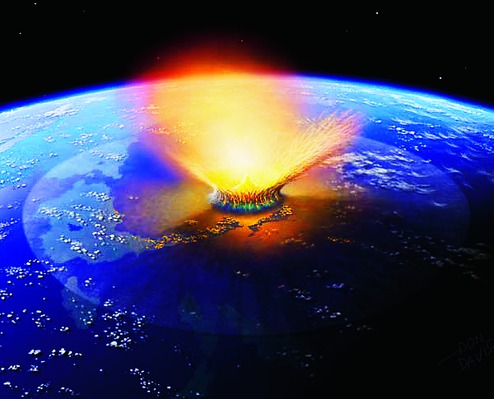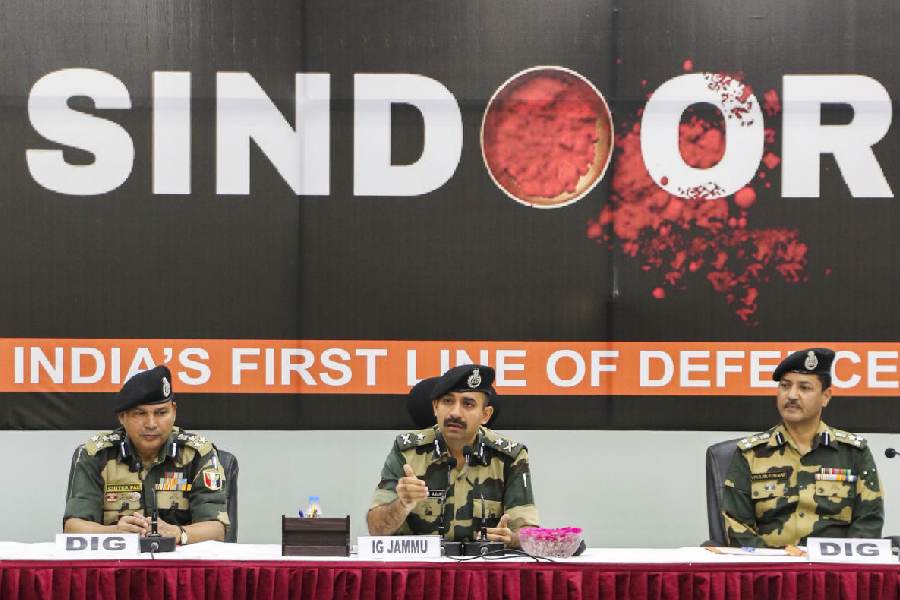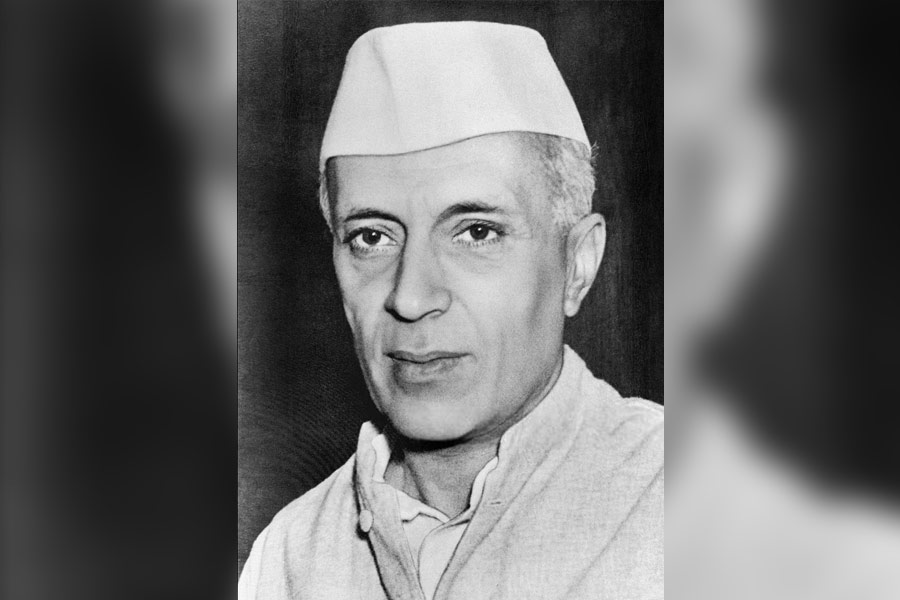
New Delhi, Aug. 21: India may have been among refuge zones for plants and animals after an asteroid struck the Earth 66 million years ago, triggering the mass extinction that wiped out 75 per cent of species including the dinosaurs.
New computer simulations by a team of US scientists have suggested that soot kicked up by the asteroid strike blocked sunlight and thrust the planet into near-total darkness for two years and caused land temperatures to plummet by 28°C on average.
While these conditions would have made photosynthesis impossible and plunged much of the planet into sub-zero temperatures, killing plants and animals, the simulations suggest India, Central America and the eastern tip of South America remained frost-free.
The simulations were based on the present-day positions of the continents and not those 66 million years ago, but the results of the study suggest that species had better chances of survival in some areas than in others.
"The frost-free conditions mean it might have been easier for plants and animals to survive there - recovery might also have happened faster there," Charles Bardeen, a scientist at the US National Center for Atmospheric Research who led the study, told The Telegraph.
The results of the simulation exercise were published today in the US journal Proceedings of the National Academy of Sciences.
Two US scientists, a father-and-son team, Luis and Walter Alvarez, had in 1980 citing geochemical evidence first proposed the hypothesis that an asteroid had hit the Earth and caused the extinction. In 2010, an international panel of scientists endorsed the hypothesis after assessing steadily mounting evidence.
Bardeen and his colleagues used a sophisticated computer model that simulated conditions on the Earth to reconstruct the aftermath of the impact of a city-sizedasteroid that slammed into Mexico's Yucatan peninsula and has been linked to the extinction.
The researchers say the force of the impact would have vapourised a part of the asteroid high above the Earth's surface and small fragments heated during entry would have sparked global fires, leading to soot. Some scientists have independently suggested that the soot from India's massive Deccan volcanic eruptions around the same time might have also contributed to the extinction event.
In the simulation exercise the soot is lofted higher and higher into the atmosphere and forms a think blanket blocking out the sun. "At first, it would have been as dark as a moonlit night," Owen B. Toon, a team member at the University of Colorado, said in a news release.
The scientists assumed the impact kicked up 15,000 million tonnes of soot, an amount calculated independently by US geochemist Wendy Wolbach in 1988 and considered as the best estimate available. The simulation has shown that 30 months after the impact much of the tropics would have had light levels only 4 per cent of the normal. It is only in the fourth year after the impact that sunlight recovers to 10 per cent of the normal over much of the Earth.
The simulation found that tropical islands such as Madagascar, Indonesia in present-day geography and coastlines are the most likely places without frost or sporadic freezing. India, Central America and the eastern tip of South America were also identified as frost-free regions.
"India was in a different position at that time, so we plan to redo the simulations with appropriate conditions," Bardeen said. "Not all species went extinct, so it is in places where the effects were more moderate that could have been a refuge for the survivors. We hope this study provides palaeontologists information that can better explain the causes of the patterns of extinction seen through fossil records."
An Indian palaeontologist who was not associated with the US study said the fossil records from India reveal "good fauna and flora" in geological layers soon after the extinction event.
"We see fossils of fish, turtles and crocodiles among other species in geological layers about 64.5 million years old," Rajeev Patnaik, professor of geology at the Panjab University, Chandigarh, told The Telegraph.
The fossil record appears consistent with the idea that India, among other regions of the world, may have been a refuge that allowed life to emerge after extinction.











